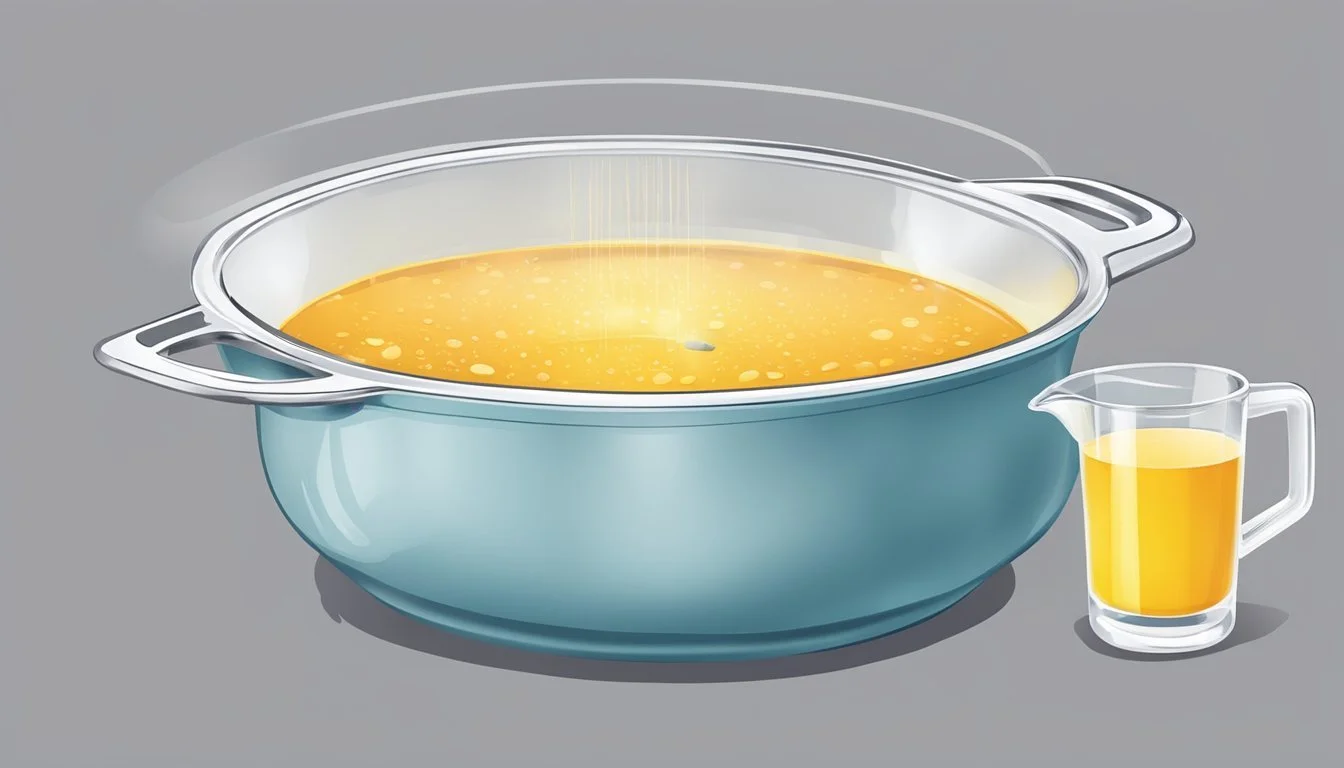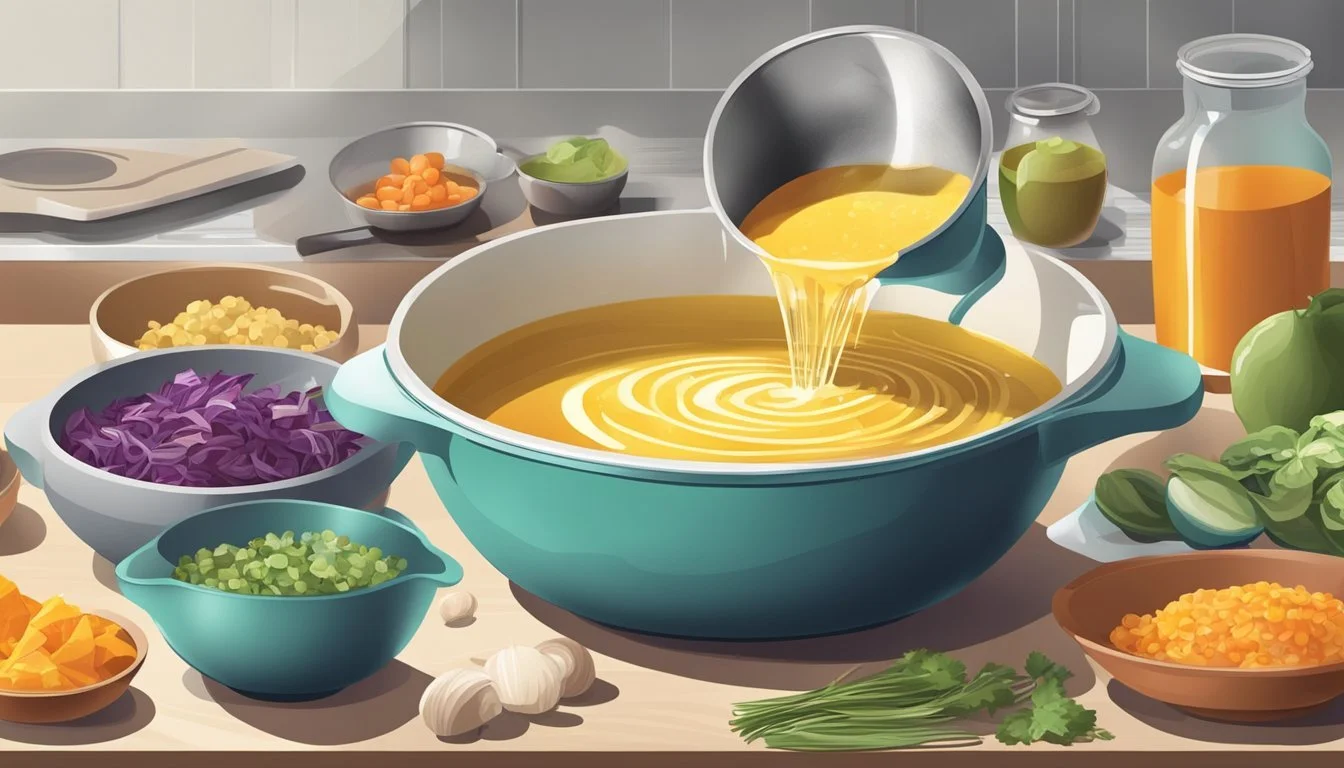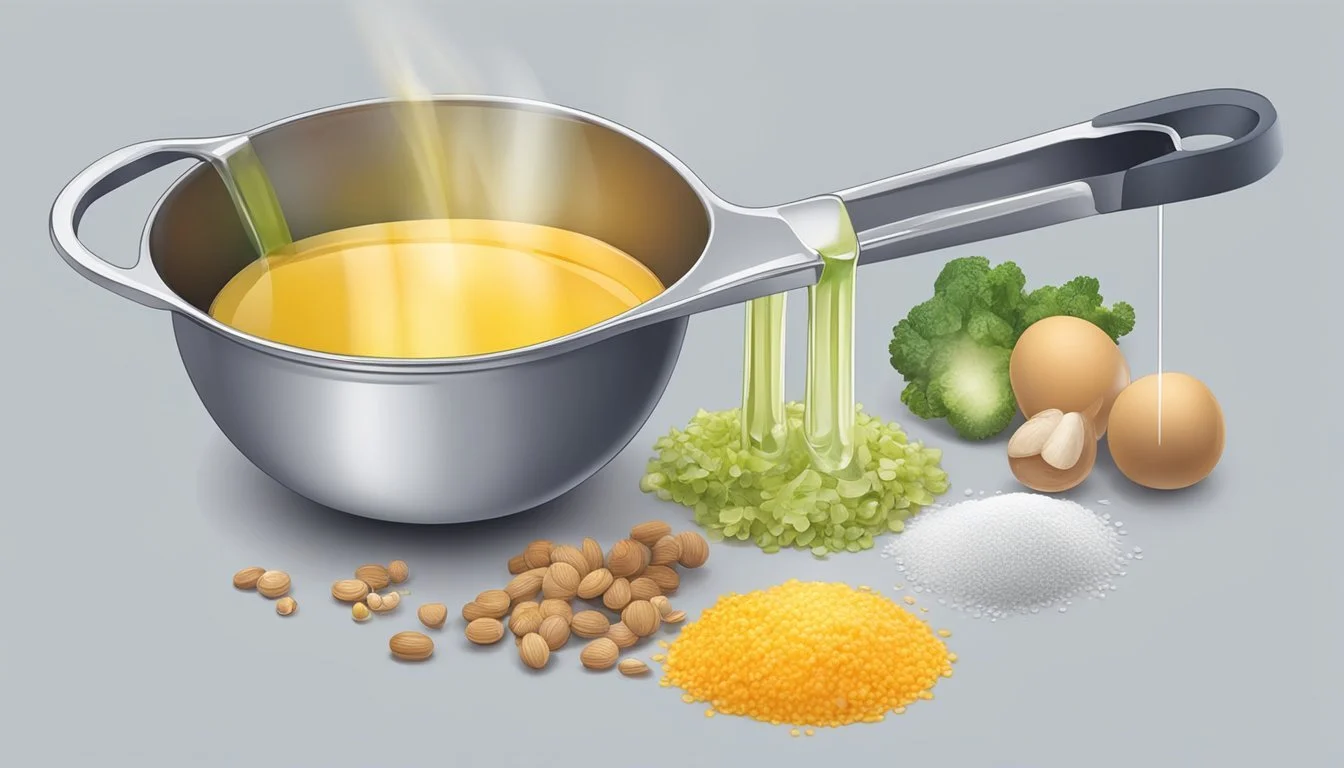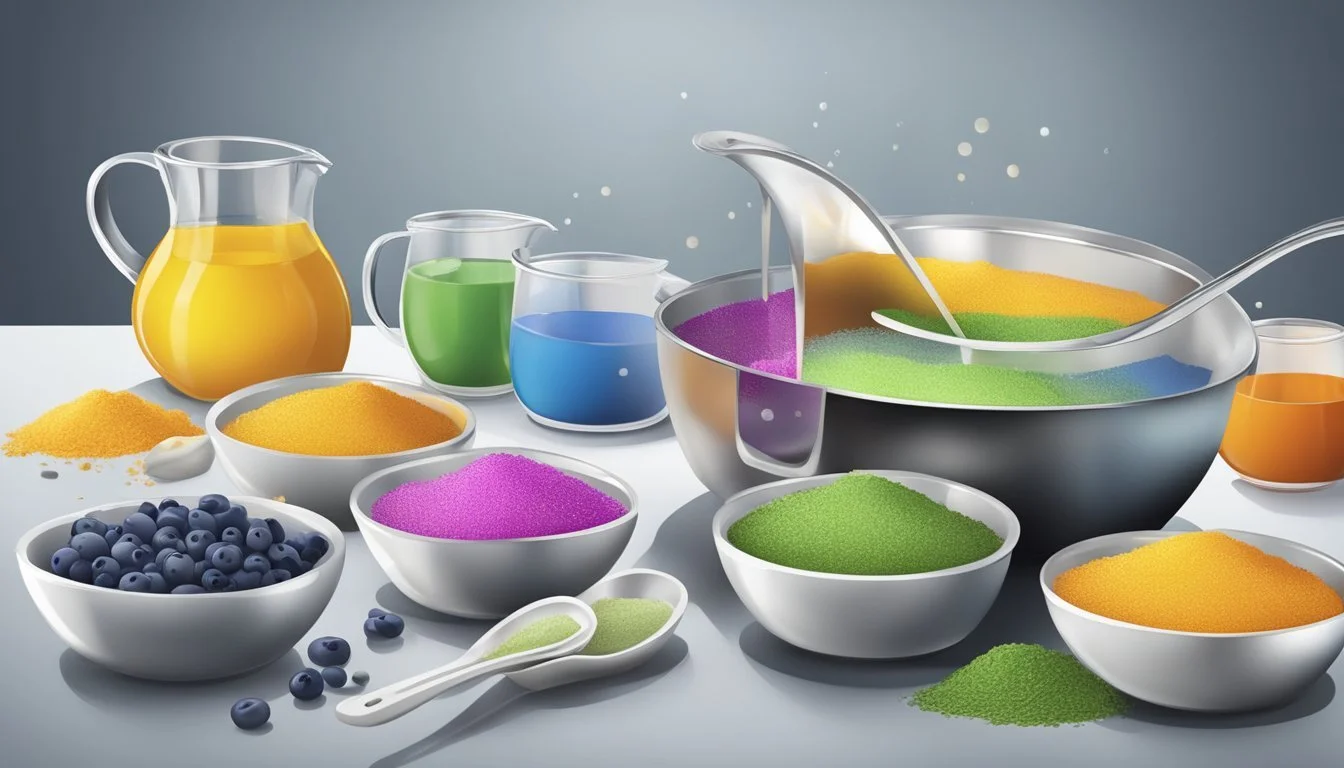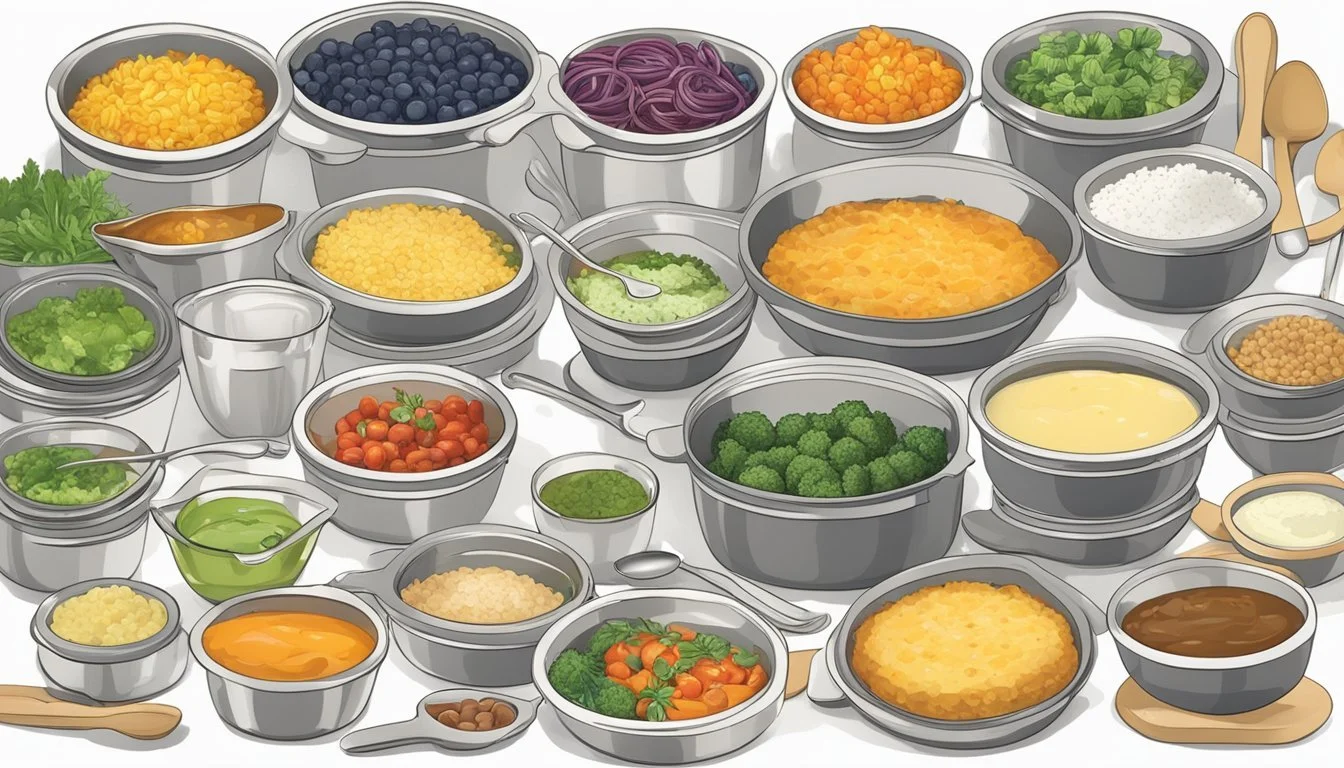How to Measure the Right Amount of Liquid for a Casserole Recipe
Accurate Volume Tips
Accurate measurement is the cornerstone of success for any casserole (What wine goes well with casseroles?) recipe. Casseroles are beloved for their comfort and versatility, yet their simplicity can be deceptive. Achieving the perfect balance of flavors and textures depends on using the right amounts of liquid, whether it be stock, milk, or water. These liquids are integral to the cooking process, often serving to cook the starches within the dish and meld the flavors together. Without proper measurement, a casserole can turn out too dry or overly soggy, compromising both taste and structure.
When preparing a casserole, every ingredient must be measured with precision. Liquid ingredients are no exception, and they should often be measured in liquid measuring cups to ensure accuracy. Liquid measuring cups are designed with markings to indicate volumes, and they usually have a spout for ease of pouring. This contrasts with dry measuring cups, which are intended for ingredients like flour or grated cheese, and could lead to an incorrect measurement if used for liquids due to the need to fill to the very top for accuracy.
It is essential, therefore, for cooks to not only select the right tools but also to understand the subtleties of measuring techniques. Pouring the liquid up to the desired mark at eye level on a flat surface and checking for meniscus—the slight curve at the surface of the liquid—is crucial. These steps help to prevent over or underestimation of the amount needed in the recipe, thus contributing to a well-executed casserole that delivers on flavor and consistency.
Understanding Casserole Basics
Crafting the perfect casserole involves a harmony of ingredients, precise measurement, and suitable cooking techniques. This section navigates the fundamentals, emphasizing the importance of liquid proportions to achieve the ideal consistency for a range of casserole types.
Essential Casserole Ingredients
Casseroles typically include a protein such as chicken, a starch like rice or potatoes, vegetables, and a binder which often includes eggs or cheese. Liquids like broth, milk, or cream are introduced to merge the ingredients into a cohesive whole when baked.
Types of Casseroles
There are various casserole categories, each with specific needs:
Traditional Casseroles often feature a creamy sauce, a protein, and a vegetable.
Rice or Pasta Casseroles generally involve grains absorbing the liquid during baking.
For Breakfast Casseroles, eggs and milk are customary, fusing together meats, cheeses, and bread.
Role of Liquid in Casseroles
Liquids are crucial for:
Merging Flavors: They help to distribute seasonings evenly.
Texture: The right amount yields a moist, not soupy or dry, final product.
Cooking the Starch: Liquids help rice or pasta to cook properly within the dish.
Importance of Measurement Accuracy
Use the following metrics for precise results:
Weight: measuring by weight in grams for solids.
Volume: for liquids, often in milliliters or cups.
Consistent measurements ensure that the casserole isn't overly dry or wet, affecting the texture and the cooking process.
Casserole Dish Selection
Choosing the appropriate dish affects the outcome:
Material: Glass or ceramic dishes are preferred for even heat distribution.
Size: Dish size guides the cooking time and temperature adjustments.
Using dishes with the recommended dimensions ensures even baking and proper heat distribution.
Preparation and Cooking Techniques
Effective methods are key:
Bake Covered or Uncovered?: Covering can retain moisture during cooking, while uncovering allows for a crispy top layer.
Temperature and Time: Most casseroles are baked between 350-375°F. Cooking times will vary based on ingredients and dish size.
Understanding these techniques helps in producing a dish that's fully cooked, with a desirable taste and texture.
Measuring Ingredients for Casseroles
Measuring ingredients accurately is crucial for the success of a casserole, ensuring consistency in flavor, texture, and cooking time. The right balance can make or break this one-dish comfort food.
Using Measuring Cups and Spoons
For volume measurements in a casserole recipe, one will need a set of both measuring cups and measuring spoons. Liquid ingredients should be measured in clear, liquid measuring cups to read the volume at eye level. Measuring spoons are necessary for adding the correct amounts of smaller ingredients.
Dry Ingredients: Scoop with a spoon and level off with a straight edge.
Wet Ingredients: Pour to the desired level, viewing at eye level.
Weighing Ingredients for Precision
Using a kitchen scale may provide more accuracy when measuring ingredients. Ingredient weights are typically listed in grams or ounces. To measure, place a bowl on the scale and press the "tare" function to zero it out before adding the ingredient.
Precision: Weighing is more precise than volume measurement, reducing cooking inconsistencies.
Conversions: Refer to a conversion chart to translate volume to weight.
Understanding Ratios for Balance
The balance of ingredients in a casserole is guided by ratios. Ratios ensure that the proportion of one component to another achieves the desired result. Understanding these ratios is key to maintaining the integrity of the dish.
Example: A typical liquid-to-dry ratio might be 1:2, with 1 cup of liquid to 2 cups of dry ingredients.
Adjusting Measurements for Casserole Size
Adjustments may be needed when modifying a casserole recipe to fit a different size or number of servings. Scaling recipes involves mathematically adjusting the quantities of ingredients to maintain proper proportions.
Increase/Decrease: Change ingredient amounts proportionally.
Kitchen Math: Double the ingredients for twice the size, halve for a smaller portion.
When tailoring measurements for casserole size, a reference to a conversion chart can be invaluable for maintaining the ratio and ingredient balance. This is vital as changing the size may affect cooking time and temperature, which should be adjusted accordingly.
Common Measurement Conversions
When measuring ingredients for a casserole recipe, precise conversions between different units of measurement are crucial to ensure the dish turns out as intended. This section outlines practical conversion information and considerations specific to volume and weight, different ingredients, and varying measurement systems.
Volume to Weight Conversions
It is often necessary to convert volume measurements to weight, especially when working with recipes that specify ingredients by weight. Standard conversions are helpful, but one should keep in mind the density of the ingredient in question. Below is a basic conversion chart:
Volume Weight - Water-Based Liquids Weight - Flour Weight - Sugar 1 cup 236.59 grams 120 grams 200 grams 1 tablespoon 14.79 grams 7.5 grams 12.5 grams 1 teaspoon 4.93 grams 2.5 grams 4.17 grams
Adjusting for Ingredient Variations
Different ingredients have variations in density which must be accounted for. A cup of sugar weighs more than a cup of flour because sugar is denser. Likewise, ingredients like brown sugar or molasses, which are packed when measured, will weigh more than their granulated counterparts. As a general rule:
Brown sugar: Press down firmly into the measuring cup; one cup is approximately 200 grams.
Flour: Sifted and spooned into a cup is around 120 grams.
Molasses or applesauce: These should be measured in fluid ounces or milliliters for precision, with 1 cup of molasses weighing about 340 grams, while 1 cup of applesauce weighs close to 245 grams.
Metric and American Measurement Systems
In the culinary world, it is common to encounter both the Metric system (milliliters and grams) and the American measurement system (cups, tablespoons, and teaspoons). Remember that these systems measure volume differently. For example, liquids are commonly measured in fluid ounces in the American system, but in the Metric system, milliliters and liters are used.
Here's a reference for some key conversions:
1 fluid ounce = 29.57 milliliters (often rounded to 30 for simplicity)
1 cup = 240 milliliters
1 tablespoon (American) = 14.79 milliliters
1 teaspoon (American) = 4.93 milliliters
Cooking typically uses volume measurements, but for precision, especially in baking, weight measurements are preferred. Conversions from American to Metric units can be tricky, so it is recommended to use a conversion chart or digital scale that can accommodate both systems.
Integrating Ingredients for Casseroles
Creating the perfect casserole requires attention to the balance and integration of ingredients. Precise layering and mixing techniques ensure even distribution for a consistent texture and flavor throughout the dish.
Layering Solids and Liquids
When constructing a casserole, the sequence of layering solid and liquid ingredients is crucial. Start with a base layer of robust ingredients like raw or sautéed onions, ensuring they will hold up during the baking process. Follow this with a pour of liquid elements such as tomato sauce or cream, which will seep down and absorb into the subsequent layers. This alternation enhances flavor penetration and assists in cooking the dish evenly.
Mixing Techniques for Even Distribution
To achieve an even distribution of mix-ins like spices, cheese, or breadcrumbs, one must employ strategic mixing techniques. For items like garlic bread cubes or cheese sauce, folding them gently into wet ingredients prevents clumping and promotes uniformity. When incorporating eggs or cream, whisk them thoroughly before adding to ensure they amalgamate smoothly with the rest of the mixture.
Combining Wet and Dry Ingredients
The method of combining wet and dry ingredients affects the overall texture of the casserole. One should add liquid ingredients like broth or milk to the dry mixture gradually, stirring consistently to avoid lumps. For spices and seasoning, including salt, disperse them evenly among the dry ingredients before the wet components are introduced to guarantee a well-seasoned outcome.
Adding Flavor Boosters and Toppings
For an additional layer of flavor and texture, casserole recipes often call for a variety of boosters and toppings. Integrating spices or finely minced garlic into the breadcrumb topping can create a captivating crust. If a recipe calls for cheese, sprinkle it atop the other ingredients just before baking to achieve a golden, melted surface. These enhance the dish’s aroma and provide an inviting crispiness that complements the creamy, softer layers beneath.
Casserole Variations and Innovations
Casseroles offer a canvas for culinary creativity, whether by incorporating regional flavors, accommodating dietary restrictions, or experimenting with ingredients for new taste experiences.
Exploring Casserole Types by Cuisine
Different cultures have their own take on the casserole, blending tradition with local ingredients. A Greek-style casserole might feature layers of feta cheese, spinach, and olives, baked until golden. In contrast, a Mexican-inspired dish could combine spiced protein with vegetables and cheese, topped with a crust of cornbread or crushed tortilla chips.
Customizing Casseroles for Dietary Needs
Casseroles can be easily tailored to meet various dietary requirements without sacrificing flavor or texture. For the vegetarian palate, zucchini, mushrooms, and spinach create a hearty base, while gluten-free alternatives to traditional noodles or pasta are readily available. Similarly, dairy-free versions may substitute vegan cheeses or nutritional yeast to achieve a similar richness to their dairy-laden counterparts.
Creative Add-ins and Substitutions
Innovation in casserole creation lies in the mix-ins and substitutions that can transform the dish. Swapping out standard mozzarella for a sharper cheddar or smoky gouda can add depth, while roasted vegetables introduce complexity. Protein options are plentiful, from traditional ground meats to vegetarian staples like tofu or lentils. With pasta as a common base, consider whole grain or legume-based alternatives for added nutrition.
Finalizing and Serving Casseroles
Successful casserole preparation involves careful attention to baking techniques and presentation. Achieving the perfect bake, with a deliciously browned crust for visual appeal and texture, is paramount to serving an impressive dish whether it's a main or a side.
Baking and Finishing Techniques
Baking a casserole requires monitoring the oven temperature and timing. Casseroles are typically baked between 350°F to 375°F, ensuring even cooking throughout without burning the edges or the bottom. The cheesy layer on top should be golden and browned, indicating a well-finished dish.
For side dishes, one might opt for a lower temperature to avoid overpowering the cheese or topping, allowing it to melt and crisp gently.
When a casserole is removed from the oven, it's important to let it rest for several minutes. This allows the hot liquid to thicken slightly and makes it easier to serve with well-defined portions. Additionally, resting helps in serving as it prevents the casserole from falling apart when cut or scooped.
For presentation, use a spatula or a sharp knife to slice through the crust to ensure that each serving has an appealing cross-section of the layers within. If the casserole brings a cheesy, golden browned top, it should be showcased front and center on the serving plate for both aesthetic appeal and to entice the senses.

